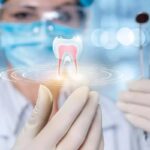The dental industry has undergone a remarkable transformation over the past few decades. What was once primarily a manual, tool-based field has now become a highly technological and precision-driven sector. These advances have not only improved treatment outcomes but also enhanced patient comfort, reduced recovery times, and broadened the range of services available. Innovations in dentistry are changing the way oral health professionals diagnose, plan, and deliver care—making visits to the dentist faster, more efficient, and often more pleasant.
The Shift Toward High-Tech Dentistry
In the past, dental treatments often relied on traditional impression materials, manual drilling, and visual inspections. While effective for their time, these methods had limitations in accuracy and patient experience. Today, cutting-edge technology allows dentists to work with unprecedented precision. Digital imaging, computer-aided design, and 3D printing are just a few examples of tools revolutionising the industry.
These innovations also extend to preventive care, where advanced diagnostic systems detect problems earlier, allowing for more conservative treatment approaches. This proactive shift benefits both the patient’s health and the longevity of their natural teeth.
Digital Dentistry: A Game Changer
Digital dentistry encompasses a range of technologies that replace or enhance traditional dental tools and techniques. Examples include:
- Intraoral Scanners – These create detailed, 3D images of the patient’s mouth, eliminating the need for messy impressions.
- Cone Beam Computed Tomography (CBCT) – A 3D imaging technique that provides highly accurate visuals for implant placement, orthodontics, and complex surgeries.
- CAD/CAM Systems – Computer-Aided Design and Manufacturing allow same-day creation of crowns, bridges, and veneers, reducing the number of appointments required.
- 3D Printing – Used to produce surgical guides, orthodontic aligners, and even custom dentures with precision and speed.
With these tools, modern dentists now have access to technologies that dramatically improve the quality, efficiency, and comfort of care. Such innovations empower practitioners to work faster while delivering more personalised treatment plans for each patient.
Minimally Invasive Dentistry
One of the most patient-friendly outcomes of these innovations is the rise of minimally invasive dentistry. Laser technology, for instance, can be used for gum contouring, cavity removal, and root canal disinfection—often without the need for anaesthesia. Air abrasion tools can clean away decay without the discomfort associated with traditional drilling.
This approach not only minimises discomfort but also preserves more of the patient’s natural tooth structure, which is crucial for long-term oral health.
The Role of AI and Data in Dental Care
Artificial Intelligence (AI) is becoming an integral part of modern dentistry. From predictive analytics that forecast patient needs to AI-powered imaging that identifies early signs of disease, this technology streamlines diagnostics and treatment planning.
AI also aids in patient communication, providing visual simulations of potential treatment outcomes. This can help patients make more informed decisions and feel more confident about their care.
Improved Patient Experience Through Technology
Dental innovations aren’t only about improving clinical results—they also aim to make the patient journey more comfortable. For example, virtual reality headsets can distract anxious patients during procedures, while noise-cancelling equipment reduces the stress caused by traditional dental sounds.
Online booking systems, automated reminders, and digital consultation platforms further enhance convenience, ensuring patients can access care with minimal disruption to their schedules.
Sustainability in Dentistry
Another significant trend in dental innovation is the move toward eco-friendly practices. Digital impressions reduce the need for disposable materials, while energy-efficient equipment minimises environmental impact. Some clinics are adopting green policies, such as using biodegradable products and investing in equipment with lower power consumption.
By aligning advanced dental care with sustainable practices, the industry is contributing to both personal and planetary health.
Global Collaboration and Knowledge Sharing
The rapid pace of dental innovation is also driven by global collaboration. Conferences, webinars, and professional networks allow dentists to share research, techniques, and success stories. This exchange of ideas ensures that new technologies and approaches are adopted quickly and effectively around the world.
The integration of dental software and modern technology continues to push the industry toward a future where dental care is more efficient, accessible, and personalised than ever before.







